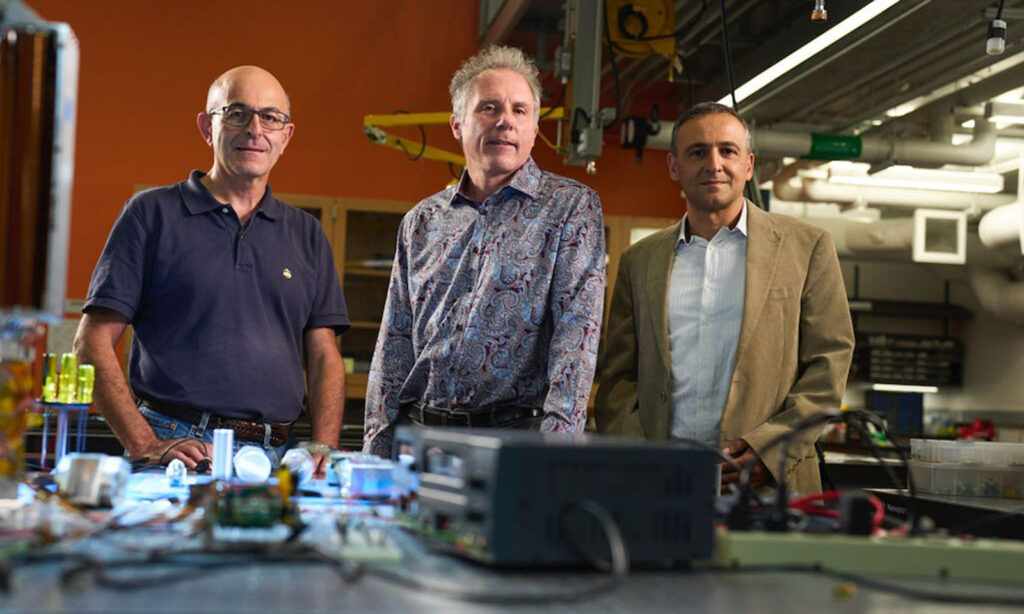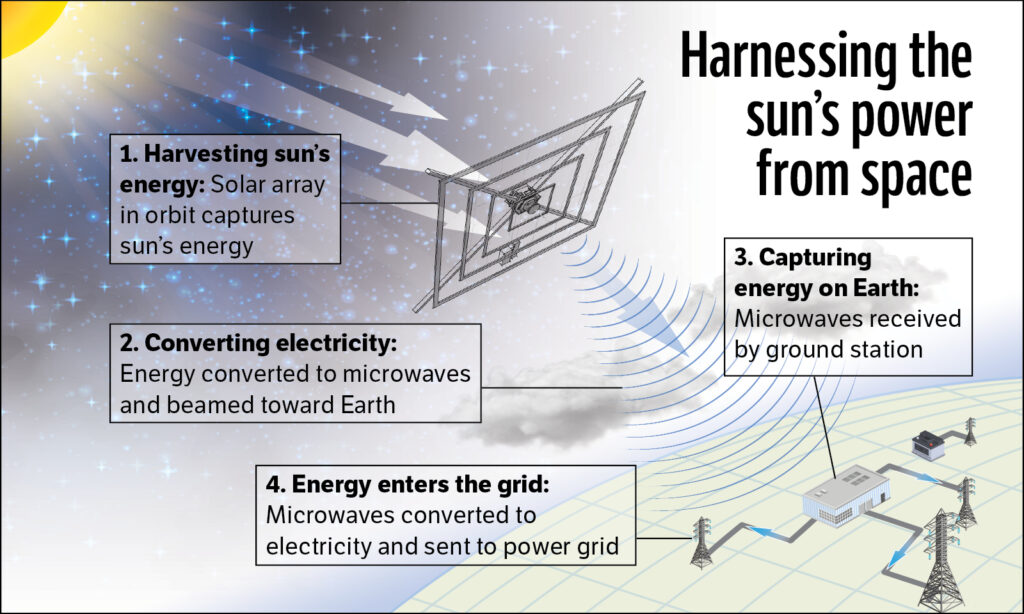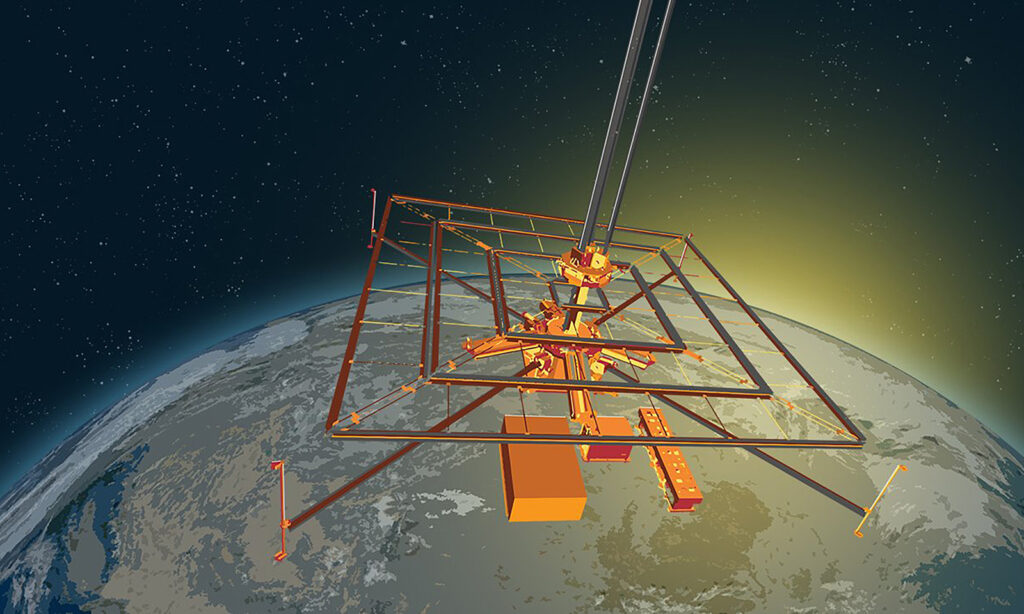In a milestone achievement with enormous potential to help solve global energy dilemmas, Caltech scientists have beamed solar power in space, which they have also been able to direct to Earth and detect with a rooftop receiver on the university’s Pasadena campus.
“This is a first,” said Caltech Space Solar Power Project co-Director Ali Hajimiri, a Bren Professor of Electrical Engineering and Medical Engineering. “To the best of our knowledge, no one has ever demonstrated wireless energy transfer in space.”

A solar space race
China, Japan, the European Union and the U.S. military are also pursuing space-based solar power, which might one day provide virtually limitless and affordable energy free of fossil-fuel pollution. But Caltech’s team, which entered the race in 2011, pulled ahead after launching its prototype – a 110-pound metallic box decked with tiny antennas – on a SpaceX rocket from Cape Canaveral in Florida on Jan. 3.
The project was first proposed by Irvine Company Chairman Donald Bren, a lifetime member of the Caltech board of trustees, who as a young man was intrigued by an article on space-based solar power in Popular Science magazine. In 2011, Bren approached Caltech’s then-president Jean-Lou Chameau to suggest that he create the pioneering project. Bren and his wife, Brigitte, also a Caltech trustee, have since donated more than $100 million for the work of a 35-member team of senior scientists and graduate and postdoctoral students.
“The hard work and dedication of the brilliant scientists at Caltech have advanced our dream of providing the world with abundant, reliable and affordable power for the benefit of all humankind,” Bren said.
Thomas F. Rosenbaum, the current Caltech president, praised the Brens for their “generosity and foresight” and Donald Bren specifically for “presenting a formidable technical challenge that promises a remarkable payoff for humanity: a world powered by uninterruptible renewable energy.”
The Caltech scientists envision a constellation of sail-like solar panels that will unfurl in space to collect sunlight, transform it to electricity, and transmit microwaves wirelessly to Earth. The team has focused on producing lightweight transmission arrays to minimize the amount of fuel needed to send them into space.
Among other things, the January launch has shown that the prototype equipment, previously tested on land, can survive the rocket launch and trip into space. Caltech’s scientists are continuing to analyze the performance of various elements of three key technologies being tested by the prototype, a process that may take many more weeks and will inform the next iteration of the device.
Affordable energy for all
Earth-based solar power production has been booming all over the world, yet it is constrained by limited hours of sunshine, available space for solar panels, and storage capacity. Space-based solar power might solve these problems while providing clean energy to poor and wealthy nations alike.
“In the same way that the internet democratized access to information, we hope that wireless energy transfer democratizes access to energy,” Hajimiri said. “No energy transmission infrastructure will be needed on the ground to receive this power. That means we can send energy to remote regions and areas devastated by war or natural disaster.”










